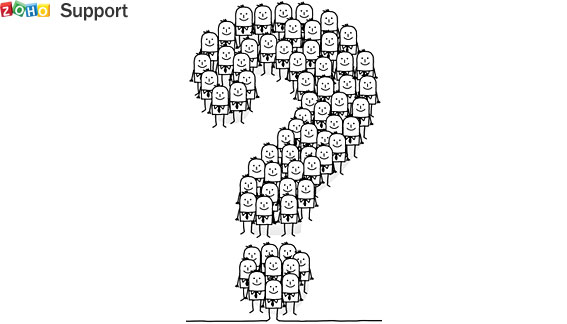What happens after a customer raises a support ticket asking for some help?
You wade through the ticket to find out what information is available. Once you ingest that, you try to find the simplest possible solution for the customer. But, a little later, you realize there’s not enough information for you to suggest anything yet.

So, you write back to the customer asking for some information. This is often a cycle and it happens once or twice again before you find a solution. Sometimes, it takes longer because the most common solutions don’t work. Sometimes it’s over in the first couple of interactions and everyone’s happy.
But, then, how many interactions is the most optimal number? When does it start becoming uncomfortable for the customer? How much information can the customer absorb from a single interaction? These questions only become more relevant as you scale up your business.
The question on our poll, this week, is about interactions with customers while handling a ticket. What you’ll read below is a brief look at the various ways of looking at this seemingly paradoxical situation.
Giving vs Asking
You have a few common solutions in your mind for the customer. You can put them all in a single interaction. One of them will work and job is done. You’ll save the day faster than your peers. But, what’s the use in giving so much information if the customer can’t ingest as much?
So, what CAN you do? You can always write to the customer asking for more information. That’ll help you narrow down your suggestions. If you ask too much information, one at a time, it will lead to dissatisfaction.
Resolution Time vs Response Time
Customers come to you asking for your help. You owe that to them as well. By getting as much information as possible, you can suggest the best possible solution every time. You’ll resolve every issue that’s within your control. What can be more important than that, right? Ummm… there’s something called Resolution Time. If you have many interactions in a ticket, your resolution time soars. But, it’s not supposed to. And, that’s the tricky part.
There’s also something called Response Time. When you try to squeeze in a few common solutions into a single interaction, you think that one of them will work. Surprise! Surprise! None of them work, because you didn’t receive one little detail. That’s unfortunate, because your response time just shot up.
Manager vs Agent
This is essentially a matter of the big picture versus the small picture. At the level of an agent, each ticket is an experience. It’s a chance to create customer happiness. It’s a path to win the customer’s respect. Naturally, an agent is likely to spend time non-uniformly across interactions in a ticket.
A manager looks at the big picture. Most of the information ingested at the managerial level is aggregate. So, in a sense, even the extra time spent by an agent on a few tickets looks more prominent to the manager.
A manager and an agent are two people who see the same customer support operation in different ways. That’s exactly why we’re asking this week’s question to both managers and agents.
We’re really curious to see what you think about this topic. Tell us in the comments section below.
Happy Polling and have a great week ahead!
Comments